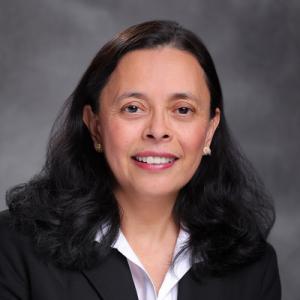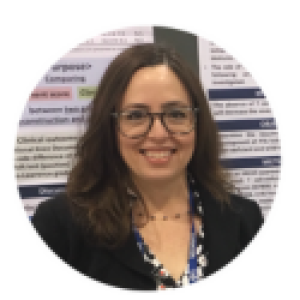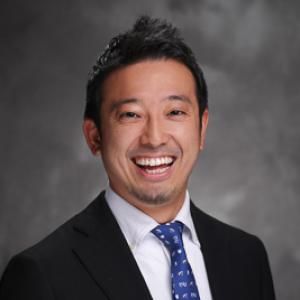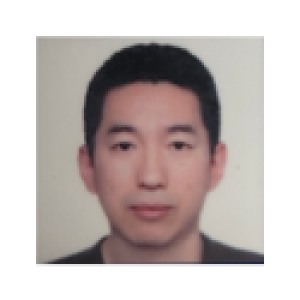Home
Ben Alman, MD, is an orthopaedic clinician-scientist whose research focuses on understanding the role of developmentally essential processes in the pathologic process involving the musculoskeletal system. The long-term goal of his work is to use this knowledge to identify improved therapeutic approaches to orthopaedic pathologic disorders. He extensively uses genetically modified mice to model human disease. He used this approach to identify new drug therapies for musculoskeletal tumors and improve the outcome of related cartilage, skin, and bone processes. As part of this work, Dr. Alman generated novel genetically modified mice to study tumors and reparative processes and is using these to develop new therapies. He also works on cellular heterogeneity in bone tumors, such as sarcomas, and how this relates to developmental processes. His lab identified a subpopulation of tumor-initiating cells in musculoskeletal tumors and found that this subpopulation is responsible for sarcoma self-renewal.
Another focus of the Alman Lab is to determine the regulation of mesenchymal cells in repair processes. Dr. Alman’s work on beta-catenin (ß-catenin) using transgenic mice was the first demonstration of the importance of this pathway in fracture repair. More recently, he used lineage-tracing studies to investigate the role of macrophage cells in skin and bone repair and found a novel role for young hematopoietic cells in rejuvenating fracture repair.
Dr. Alman is the principal investigator on several NIH grants. He has more than 175 peer-reviewed publications in journals such as Lancet, Cell, and Nature Medicine. He has supervised over 30 graduate students and postdoctoral research trainees in his lab. He was recruited to Duke from Toronto’s Hospital for Sick Children in 2013.
Dr. Alman identified somatic mutations resulting in ß-catenin mediated transcription in more than 70 percent of desmoid tumors. Based on this work, ß-catenin analysis is used to diagnose this tumor type, and mutational analysis is used as a prognostic test.
Dr. Alman’s group found that ß-catenin mediated transcription is activated during the proliferative phase of wound healing and regulates scar size and osteoblast differentiation in fracture repair. He was the first to show that circulating factors regulate fracture healing and ß-catenin during repair, and using parabiosis, he found that factors from the blood of juvenile animals can rejuvenate fracture repair.
Dr. Alman and his research team identified the first mutation causing enchondromas (a benign pre-malignant cartilage tumor). Using a mouse expressing the mutation, he identified pathways regulating tumor progression.
Dr. Alman and his group were the first to show that mesenchymal tumors contain a subpopulation of cells with tumor-propagating characteristics and that targeting this cell population can treat sarcomas.
Research
We are using cell and developmental biology to identify & improve therapeutic approaches to regeneration & pathologic disorders.
Wound Healing
Stem Cells & Neoplasia
Cartilage & Joint Development
Joint Degeneration
Bone Regeneration
Wound Healing
The entire wound-healing process is a complex series of events that begins at the moment of injury and can continue for months to years. Our goal is to determine the role of the Wnt pathway, particularly its key molecule β-catenin, in the reconstitution of the skin's epithelial and dermal components during wound healing. Using different genetically engineered mice designed in our lab, we investigate the fate of the cells contributing to healing and the role of β-catenin in this process. As part of this work, we identified a novel drug that can decrease scar size and is working to determine how it can be developed into a topical agent for patients.
Team Members: Puviindran Nadesan, Heather Whetstone, Saeid Amini Nik, Kirsten Bielefeld and Raymond Poon.
Stem Cells & Neoplasia
Stem cells are the earliest step in the hierarchal progressive maturation to functionally differentiated cells with self-renew and fast proliferation characteristics. Although the concept that tumors contain a subpopulation of cells with stem cell properties has been demonstrated in several tumor types, little has been reported on the role of stem cells in musculoskeletal (MSK) tumors, perhaps due to lack of unique mesenchymal stem cell (MSC) marker. Our studies hypothesize that MSK tumors contain a subpopulation of tumor-initiating cells. The first step in our research is identifying and isolating tumor-initiating cells (TIC) from musculoskeletal tumors. Further study of this population of cells will allow for the characterization of molecular pathways regulating the development of MSK, ultimately identifying potential novel therapeutic targets. We are also studying the role of developmentally important signaling pathways in fibrous and cartilaginous tumors (aggressive fibromatosis, desmoid tumors, enchondromas, and chondrosarcoma). In this work, we generated genetically modified mice that developed these tumors. We are studying how modulating the signaling pathways causes these tumors and how this information could be used to develop potential new therapeutic approaches.
Team Members: Hirata Makoto, Peter Dixon, Qingxia Wei, Mushriq Al Jazrawe, Cassandra Tyson, Ronak Ghanbari-Azarnier, Shingo Sato, and Katherine Ho.
Cartilage & Joint Development
During development, cell fate experiments have determined that growth plate and articular chondrocytes differentiate from two distinct populations of cells. Within the growth plate, the Indian hedgehog (Ihh) regulates chondrocyte proliferation and differentiation that involves a feedback loop with the parathyroid hormone-related protein (PTHrP). We have generated transgenic mice showing that deregulation of the hedgehog/PTHrP feedback loop during growth plate development results in chondrodysplasias and the development of cartilage tumors; however, the role of hedgehog signaling in the differentiation and maintenance of articular chondrocyte progenitors is poorly defined. Through investigation of transgenic mice, we hope to identify further the role of hedgehogs and other signaling pathways on growth plate and articular cartilage development.
Team Members: Heather Whetstone, Jason Rockel, Claire Hsu, and Louisa Ho.
Joint Degeneration & Repair
Osteoarthritis (OA) is a degenerative disease of the joints, characterized by degradation and calcification of articular cartilage and subchondral bone changes. Because articular cartilage does not regenerate, understanding how joints develop may provide new insight and novel therapies for OA. Our current data suggests that Wnt, Hh, sterols, and other signaling pathways involved in normal joint development may also be involved in the development and progression of OA. Therefore, we aim to elucidate how modulating these pathways can attenuate OA pathology and enhance joint repair.
Team Members: Henry Ma, Amanda Ali, Heather Whetstone, and Peter Kannu.
Bone Regeneration
Endochondral ossification is recapitulated during long bone repair. Although the β-catenin pathway has been investigated in bone development and skeletogenesis context, its role in bone regeneration is unclear. Using pharmacological reagents, we can augment β-catenin signaling during bone repair and have observed substantially improved healing in various pathological conditions. Deficiencies seen in bone regeneration with age are (in part) mediated by the β-catenin pathway. Our models, which can “rejuvenate” aged bone regeneration, do so in a β-catenin dependent manner. Mutation in the FGFR3 gene (achondroplasia) results in augmented bone repair and cellular differentiation. We are currently investigating the impact of FGFR3 signaling on osteoblast differentiation. Furthermore, we are also investigating how glucocorticoids induce osteoporosis in chronic pediatric diseases such as Acute Lymphoblastic Leukemia and Duchene Muscular Dystrophy. Insights into these pathways and diseases may offer new therapeutic options to enhance bone regeneration or fracture repair.
Team Members: Puviindran Nadesan, Linda Vi, Farasat Zaman, Gurpreet Baht, Saber Ghadakzadeh, Heather Whetstone, Chunying Yu and Simon Kelley.
People
The Alman laboratory research focuses on five research projects: Wound Healing, Stem Cells and Neoplasia, Cartilage and Joint Development, Joint Degeneration and Repair, and Bone Regeneration. Members within the five research projects interact extensively and share and complement research expertise.
Publications
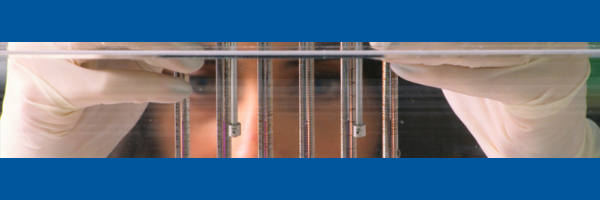
Selected Publications
Publications
Book Sections
Conference Papers
Journal Articles
*Due to sponsor publicity restrictions, some awards may not be displayed.
Publications
Book Sections
- Alman, B. “Desmoid tumors: Are they benign or malignant?.” In Desmoid Tumors, 195-203. January 1, 2012. Full Text
- Yassir, WK, Alman, BA, and Goldberg, MJ. “Defective Limb Embryology.” In Fetal and Neonatal Physiology: Third Edition, 1844-1849. December 1, 2003. Full Text
Conference Papers
- Sekar, M, and Alman, BA. “Macrophage-secreted Factors that Rejuvenate Delayed Fracture Healing Characteristic of Aging.” April 2015. Link to Item
- Ali, SA, Whetstone, HC, and Alman, BA. “HEDGEHOG SIGNALING REGULATES CHOLESTEROL HOMEOSTASIS IN OSTEOARTHRITIS.” April 2014. Link to Item
- Singh, K, Mihic, A, Hatta, K, Amini-Nik, S, Wu, J, Li, S-H, Sun, L, Alman, BA, Brunt, KR, Weisel, RD, and Li, R-K. “Reduced beta-catenin Expression in Mouse Cardiomyocytes Increases Matrix Metalloproteinase Activation and Apoptosis, Producing Greater Post-Infarction Ventricular Dysfunction.” November 26, 2013. Link to Item
- Ng, AH, Alman, BA, and Grynpas, MD. “Development of a mouse model of Adynamic Bone Disease (ABD).” May 7, 2011. Full Text Link to Item
- Biggar, WD, Harris, VA, and Alman, BA. “Does deflazacort treatment impact the surgical outcomes for boys with Duchenne muscular dystrophy?.” October 2006. Full Text Link to Item
Journal Articles
- Bartholf DeWitt, Suzanne, Sarah Hoskinson Plumlee, Hailey E. Brighton, Dharshan Sivaraj, E. J. Martz, Maryam Zand, Vardhman Kumar, et al. “Loss of ATRX promotes aggressive features of osteosarcoma with increased NF-κB signaling and integrin binding.” Jci Insight 7, no. 17 (September 8, 2022). https://doi.org/10.1172/jci.insight.151583.Full Text Link to Item
- Ito, Kan, Yoshihiro Nishida, Shunsuke Hamada, Koki Shimizu, Tomohisa Sakai, Bisei Ohkawara, Benjamin A. Alman, et al. “Efficacy of auranofin as an inhibitor of desmoid progression.” Sci Rep 12, no. 1 (July 13, 2022): 11918. https://doi.org/10.1038/s41598-022-15756-9. Full Text Link to Item
- Schut, Anne-Rose W., Anne L. M. Vriends, Andrea Sacchetti, Milea J. M. Timbergen, Benjamin A. Alman, Mushriq Al-Jazrawe, Dirk J. Grünhagen, Cornelis Verhoef, Stefan Sleijfer, and Erik A. C. Wiemer. “In desmoid-type fibromatosis cells, sorafenib induces ferroptosis and apoptosis, which are enhanced by autophagy inhibition.” Eur J Surg Oncol 48, no. 7 (July 2022): 1527–35. https://doi.org/10.1016/j.ejso.2022.02.020. Full Text Link to Item
- Zhang, Hongyuan, Vijitha Puviindran, Puviindran Nadesan, Xiruo Ding, Leyao Shen, Yuning J. Tang, Hidetoshi Tsushima, et al. “Distinct Roles of Glutamine Metabolism in Benign and Malignant Cartilage Tumors With IDH Mutations.” J Bone Miner Res 37, no. 5 (May 2022): 983–96. https://doi.org/10.1002/jbmr.4532. Full Text Link to Item
- Yahara, Yasuhito, Tuyet Nguyen, Koji Ishikawa, Katsuhiko Kamei, and Benjamin A. Alman. “The origins and roles of osteoclasts in bone development, homeostasis and repair.” Development 149, no. 8 (April 15, 2022). https://doi.org/10.1242/dev.199908. Full Text Link to Item
- Obremskey, William, Ben Alman, Thomas Parker Vail, Michael Suk, and George Russell. “How to Assess Quality in an Increasingly Diverse Health-Care System: AOA Critical Issues Symposium.” J Bone Joint Surg Am, January 18, 2022. https://doi.org/10.2106/JBJS.21.00307. Full Text Link to Item
- Naert, Thomas, Dieter Tulkens, Tom Van Nieuwenhuysen, Joanna Przybyl, Suzan Demuynck, Matt van de Rijn, Mushriq Al-Jazrawe, et al. “CRISPR-SID: Identifying EZH2 as a druggable target for desmoid tumors via in vivo dependency mapping.” Proc Natl Acad Sci U S A 118, no. 47 (November 23, 2021). https://doi.org/10.1073/pnas.2115116118. Full Text Link to Item
- Tang, Yuning Jackie, Vijitha Puviindran, Yu Xiang, Yasuhito Yahara, Hongyuan Zhang, Puviindran Nadesan, Yarui Diao, David G. Kirsch, and Benjamin A. Alman. “Tumor-propagating side population cells are a dynamic subpopulation in undifferentiated pleomorphic sarcoma.” Jci Insight 6, no. 22 (November 2021): e148768. https://doi.org/10.1172/jci.insight.148768. Full Text
- Rickert, Kathleen D., Paolo Arrigoni, Camille R. Guzel, Helena F. Barber, Benjamin A. Alman, and Robert K. Lark. “Growth Modulation by Stimulating the Growth Plate: A Pilot Study.” Ultrasound Med Biol 47, no. 8 (August 2021): 2339–45. https://doi.org/10.1016/j.ultrasmedbio.2021.03.036. Full Text Link to Item
- Pathmanapan, Sinthu, Olga Ilkayeva, John T. Martin, Adrian Kwan Ho Loe, Hongyuan Zhang, Guo-Fang Zhang, Christopher B. Newgard, Jay S. Wunder, and Benjamin A. Alman. “Mutant IDH and non-mutant chondrosarcomas display distinct cellular metabolomes.” Cancer Metab 9, no. 1 (March 24, 2021): 13. https://doi.org/10.1186/s40170-021-00247-8. Full Text Link to Item
- Zhang, Hongyuan, and Benjamin A. Alman. “Enchondromatosis and Growth Plate Development.” Curr Osteoporos Rep 19, no. 1 (February 2021): 40–49. https://doi.org/10.1007/s11914-020-00639-7. Full Text Link to Item
- Kavolus, Joseph J., Alexander L. Lazarides, Christina Moore, Thorsten M. Seyler, Samuel S. Wellman, David E. Attarian, Michael P. Bolognesi, and Benjamin A. Alman. “The Calpain Gene is Correlated With Metal-on-Metal Hip Replacement Failures.” J Arthroplasty 36, no. 1 (January 2021): 236-241.e3. https://doi.org/10.1016/j.arth.2020.07.054. Full Text Link to Item
- Yahara, Yasuhito, Xinyi Ma, Liam Gracia, and Benjamin A. Alman. “Monocyte/Macrophage Lineage Cells From Fetal Erythromyeloid Progenitors Orchestrate Bone Remodeling and Repair.” Front Cell Dev Biol 9 (2021): 622035. https://doi.org/10.3389/fcell.2021.622035. Full Text Link to Item
- Obremskey, William T., Sanford E. Emery, and Benjamin A. Alman. “Challenges and Solutions to Academic Orthopaedics in Current Health-Care Economics: AOA Critical Issues.” J Bone Joint Surg Am 102, no. 9 (May 6, 2020): e38. https://doi.org/10.2106/JBJS.19.01054. Full Text Link to Item
- Ide, Shintaro, Yasuhito Yahara, Yoshihiko Kobayashi, Sarah A. Strausser, Kana Ide, Anisha Watwe, Shengjie Xu-Vanpala, et al. “Yolk-sac-derived macrophages progressively expand in the mouse kidney with age.” Elife 9 (April 17, 2020). https://doi.org/10.7554/eLife.51756. Full Text Link to Item
- Yahara, Yasuhito, Tomasa Barrientos, Yuning J. Tang, Vijitha Puviindran, Puviindran Nadesan, Hongyuan Zhang, Jason R. Gibson, et al. “Erythromyeloid progenitors give rise to a population of osteoclasts that contribute to bone homeostasis and repair.” Nat Cell Biol 22, no. 1 (January 2020): 49–59. https://doi.org/10.1038/s41556-019-0437-8. Full Text Link to Item
- Tang, Yuning J., Jianguo Huang, Hidetoshi Tsushima, Ga I. Ban, Hongyuan Zhang, Kristianne M. Oristian, Vijitha Puviindran, et al. “Tracing Tumor Evolution in Sarcoma Reveals Clonal Origin of Advanced Metastasis.” Cell Rep 28, no. 11 (September 10, 2019): 2837-2850.e5. https://doi.org/10.1016/j.celrep.2019.08.029. Full Text Link to Item
- Kwak, Yoon Hae, Tomasa Barrientos, Bridgette Furman, Hazel Zhang, Vijitha Puviindran, Hattie Cutcliffe, Jonas Herfarth, Eugene Nwankwo, and Benjamin A. Alman. “Pharmacologic targeting of β-catenin improves fracture healing in old mice.” Sci Rep 9, no. 1 (June 21, 2019): 9005. https://doi.org/10.1038/s41598-019-45339-0. Full Text Link to Item
- Zhang, Hongyuan, Qingxia Wei, Hidetoshi Tsushima, Vijitha Puviindran, Yuning J. Tang, Sinthu Pathmanapan, Raymond Poon, et al. “Intracellular cholesterol biosynthesis in enchondroma and chondrosarcoma.” Jci Insight 5 (April 30, 2019). https://doi.org/10.1172/jci.insight.127232. Full Text Link to Item
- Ali, Shabana Amanda, Ben Niu, Kathryn S. E. Cheah, and Benjamin Alman. “Unique and overlapping GLI1 and GLI2 transcriptional targets in neoplastic chondrocytes.” Plos One 14, no. 1 (2019): e0211333. https://doi.org/10.1371/journal.pone.0211333. Full Text Link to Item
- Vi, Linda, Gurpreet S. Baht, Erik J. Soderblom, Heather Whetstone, Qingxia Wei, Bridgette Furman, Vijitha Puviindran, et al. “Macrophage cells secrete factors including LRP1 that orchestrate the rejuvenation of bone repair in mice.” Nat Commun 9, no. 1 (December 5, 2018): 5191. https://doi.org/10.1038/s41467-018-07666-0. Full Text Open Access Copy Link to Item
- Nousiainen, Markku T., Polina Mironova, Melissa Hynes, Susan Glover Takahashi, Richard Reznick, William Kraemer, Benjamin Alman, Peter Ferguson, and Peter CBC Planning Committee. “Eight-year outcomes of a competency-based residency training program in orthopedic surgery.” Med Teach 40, no. 10 (October 2018): 1042–54. https://doi.org/10.1080/0142159X.2017.1421751. Full Text Link to Item
- Apkon, Susan D., Ben Alman, David J. Birnkrant, Robert Fitch, Robert Lark, William Mackenzie, Norbert Weidner, and Michael Sussman. “Orthopedic and Surgical Management of the Patient With Duchenne Muscular Dystrophy.” Pediatrics 142, no. Suppl 2 (October 2018): S82–89. https://doi.org/10.1542/peds.2018-0333J. Full Text Link to Item
- Tsushima, Hidetoshi, Yuning J. Tang, Vijitha Puviindran, Shu-Hsuan Claire Hsu, Puviindran Nadesan, Chunying Yu, Hongyuan Zhang, Anthony J. Mirando, Matthew J. Hilton, and Benjamin A. Alman. “Intracellular biosynthesis of lipids and cholesterol by Scap and Insig in mesenchymal cells regulates long bone growth and chondrocyte homeostasis.” Development 145, no. 13 (July 9, 2018). https://doi.org/10.1242/dev.162396. Full Text Link to Item
- Birnkrant, David J., Katharine Bushby, Carla M. Bann, Benjamin A. Alman, Susan D. Apkon, Angela Blackwell, Laura E. Case, et al. “Diagnosis and management of Duchenne muscular dystrophy, part 2: respiratory, cardiac, bone health, and orthopaedic management.” Lancet Neurol 17, no. 4 (April 2018): 347–61. https://doi.org/10.1016/S1474-4422(18)30025-5. Full Text Link to Item
- Baht, Gurpreet S., Linda Vi, and Benjamin A. Alman. “The Role of the Immune Cells in Fracture Healing.” Curr Osteoporos Rep 16, no. 2 (April 2018): 138–45. https://doi.org/10.1007/s11914-018-0423-2. Full Text Link to Item
- Nousiainen, MT, McQueen, SA, Ferguson, P, Alman, B, Kraemer, W, Safir, O, Reznick, R, and Sonnadara, R. “Simulation for Teaching Orthopaedic Residents in a Competency-based Curriculum: Do the Benefits Justify the Increased Costs?.” Clinical Orthopaedics and Related Research® 474, no. 4 (April 2016): 935-944. Full Text
- Ng, AH, Omelon, S, Variola, F, Allo, B, Willett, TL, Alman, BA, and Grynpas, MD. “Adynamic Bone Decreases Bone Toughness During Aging by Affecting Mineral and Matrix.” Journal of Bone and Mineral Research: The official journal of the American Society for Bone and Mineral Research 31, no. 2 (February 2016): 369-379.
- Ali, SA, Al-Jazrawe, Ma, H, Whetstone, H, Poon, R, Farr, S, Naples, M, Adeli, K, and Alman, BA. “Regulation of Cholesterol Homeostasis by Hedgehog Signaling in Osteoarthritic Cartilage.” Arthritis & rheumatology (Hoboken, N.J.) 68, no. 1 (January 2016): 127-137.
- Al-Jazrawe, M, Au, M, Alman, B, Al-Jazrawe, M, Au, M, and Alman, B. “Optimal therapy for desmoid tumors: Current options and challenges for the future optimal therapy for desmoid tumors: current options and challenges for the future (PublishedAccepted).”Expert Review of Anticancer Therapy 15, no. 12 (December 2, 2015): 1443-1458. (Review) Full Text
- Gray, MJ, Kannu, P, Sharma, S, Neyt, C, Zhang, D, Paria, N, Daniel, PB, Whetstone, H, Sprenger, H-G, Hammerschmidt, P, Weng, A, Dupuis, L, Jobling, R, Mendoza-Londono, R, Dray, M, Su, P, Wilson, MJ, Kapur, RP, McCarthy, EF, Alman, BA, Howard, A, Somers, GR, Marshall, CR, Manners, S, Flanagan, AM, Rathjen, KE, Karol, LA, Crawford, H, Markie, DM, Rios, JJ, Wise, CA, and Robertson, SP. “Mutations Preventing Regulated Exon Skipping in MET Cause Osteofibrous Dysplasia.” The American Journal of Human Genetics 97, no. 6 (December 2015): 837-847. Full Text
- Stinson, JN, Jibb, LA, Nguyen, C, Nathan, PC, Maloney, AM, Dupuis, LL, Gerstle, JT, Hopyan, S, Alman, BA, Strahlendorf, C, Portwine, C, and Johnston, DL. “Construct validity and reliability of a real-time multidimensional smartphone app to assess pain in children and adolescents with cancer.” Pain 156, no. 12 (December 2015): 2607-2615.
- Ng, AH, Baht, GS, Alman, BA, and Grynpas, MD. “Bone Marrow Stress Decreases Osteogenic Progenitors.” Calcified Tissue International 97, no. 5 (November 2015): 476-486.
- Wei, Q, Tang, YJ, Voisin, V, Sato, S, Hirata, M, Whetstone, H, Han, I, Ailles, L, Bader, GD, Wunder, J, and Alman, BA. “Identification of CD146 as a marker enriched for tumor-propagating capacity reveals targetable pathways in primary human sarcoma.”Oncotarget 6, no. 37 (November 2015): 40283-40294.
- Alman, BA. “The role of hedgehog signaling in skeletal health and disease.” Nature reviews. Rheumatology 11, no. 9 (September 2015): 552-560. (Review)
- Craft, AM, Rockel, JS, Nartiss, Y, Kandel, RA, Alman, BA, and Keller, GM. “Generation of articular chondrocytes from human pluripotent stem cells.” Nature Biotechnology 33, no. 6 (June 2015): 638-645.
- Vi, L, Baht, GS, Whetstone, H, Ng, A, Wei, Q, Poon, R, Mylvaganam, S, Grynpas, M, and Alman, BA. “Macrophages promote osteoblastic differentiation in-vivo: implications in fracture repair and bone homeostasis.” Journal of Bone and Mineral Research: The Official Journal of the American Society for Bone and Mineral Research 30, no. 6 (June 2015): 1090-1102.
- Hirata, M, Sasaki, M, Cairns, RA, Inoue, S, Puviindran, V, Li, WY, Snow, BE, Jones, LD, Wei, Q, Sato, S, Tang, YJ, Nadesan, P, Rockel, J, Whetstone, H, Poon, R, Weng, A, Gross, S, Straley, K, Gliser, C, Xu, Y, Wunder, J, Mak, TW, and Alman, BA. “Mutant IDH is sufficient to initiate enchondromatosis in mice.” Proceedings of the National Academy of Sciences of the United States of America 112, no. 9 (March 2015): 2829-2834.
- Baht, GS, Silkstone, D, Vi, L, Nadesan, P, Amani, Y, Whetstone, H, Wei, Q, and Alman, BA. “Exposure to a youthful circulation rejuvenates bone repair through modulation of β-catenin.” Nature Communications 6 (January 2015): 7131-.
- Baht, GS, Silkstone, D, Vi, L, Nadesan, P, Amani, Y, Whetstone, H, Wei, Q, and Alman, BA. “Erratum: Exposure to a youthful circulation rejuvenates bone repair through modulation of β-catenin.” Nature Communications 6 (January 2015): 7761-.
- Hoogenes, J, Mironova, P, Safir, O, McQueen, SA, Abdelbary, H, Drexler, M, Nousiainen, M, Ferguson, P, Kraemer, W, Alman, B, Reznick, RK, and Sonnadara, RR. “Student-led learning: a new teaching paradigm for surgical skills.” American Journal of Surgery 209, no. 1 (January 2015): 107-114.
- Ng, AH, Baht, GS, Alman, BA, and Grynpas, MD. “Bone Marrow Stress Decreases Osteogenic Progenitors.” Calcified Tissue International 97, no. 5 (2015): 476-486. Full Text
- Bernick, J, Wang, Y, Sigal, IA, Alman, BA, Whyne, CM, and Nam, D. “Parameters for lithium treatment are critical in its enhancement of fracture-healing in rodents.” The Journal of bone and joint surgery. American volume 96, no. 23 (December 2014): 1990-1998.
- Gordon, JA, Lisle, JW, Alman, BA, and Lian, JB. “Disruption of crosstalk between mesenchymal stromal and tumor cells in bone marrow as a therapeutic target to prevent metastatic bone disease.” Journal of Cellular Physiology 229, no. 12 (December 2014): 1884-1886.
- Ng, AH, Willett, TL, Alman, BA, and Grynpas, MD. “Development, validation, and characterization of a novel mouse model of Adynamic Bone Disease (ABD).” Bone 68 (November 2014): 57-66.
- Klingberg, F, Chow, ML, Koehler, A, Boo, S, Buscemi, L, Quinn, TM, Costell, M, Alman, BA, Genot, E, and Hinz, B. “Prestress in the extracellular matrix sensitizes latent TGF-β1 for activation.” The Journal of Cell Biology 207, no. 2 (October 20, 2014): 283-297.
- Alman, B, and Evans, C. “On the shoulders of giants: The future of the Journal of Orthopaedic Research.” Journal of Orthopaedic Research 32, no. 9 (September 2014): 1095-1096. Full Text
- Sonnadara, RR, Mui, C, McQueen, S, Mironova, P, Nousiainen, M, Safir, O, Kraemer, W, Ferguson, P, Alman, B, and Reznick, R. “Letter to the editor response.” Journal of Surgical Education 71, no. 5 (September 2014): 652-653. (Letter)
- Lundine, KM, Lewis, SJ, Al-Aubaidi, Z, Alman, B, and Howard, AW. “Patient outcomes in the operative and nonoperative management of high-grade spondylolisthesis in children.” Journal of Pediatric Orthopaedics 34, no. 5 (July 2014): 483-489.
- Amini-Nik, S, Cambridge, E, Yu, W, Guo, A, Whetstone, H, Nadesan, P, Poon, R, Hinz, B, and Alman, BA. “β-Catenin-regulated myeloid cell adhesion and migration determine wound healing.” The Journal of Clinical Investigation 124, no. 6 (June 2014): 2599-2610.
- Campbell, VT, Nadesan, P, Ali, SA, Wang, CY, Whetstone, H, Poon, R, Wei, Q, Keilty, J, Proctor, J, Wang, LW, Apte, SS, McGovern, K, Alman, BA, and Wunder, JS. “Hedgehog pathway inhibition in chondrosarcoma using the smoothened inhibitor IPI-926 directly inhibits sarcoma cell growth.” Molecular cancer therapeutics 13, no. 5 (May 2014): 1259-1269.
- Baht, GS, Silkstone, D, Nadesan, P, Whetstone, H, and Alman, BA. “Activation of hedgehog signaling during fracture repair enhances osteoblastic-dependent matrix formation.” Journal of Orthopaedic Research 32, no. 4 (April 1, 2014): 581-586. Full Text
- Knight, DM, Alves, C, Alman, B, and Howard, A. “Percutaneous screw fixation promotes healing of lateral condyle nonunion in children.” Journal of Pediatric Orthopaedics 34, no. 2 (March 2014): 155-160.
- Lo, WW, Wunder, JS, Dickson, BC, Campbell, V, McGovern, K, Alman, BA, and Andrulis, IL. “Involvement and targeted intervention of dysregulated hedgehog signaling in osteosarcoma.” Cancer 120, no. 4 (February 15, 2014): 537-547. Full Text
- Lo, WW, Wunder, JS, Dickson, BC, Campbell, V, McGovern, K, Alman, BA, and Andrulis, IL. “Involvement and targeted intervention of dysregulated Hedgehog signaling in osteosarcoma.” Cancer 120, no. 4 (February 15, 2014): 537-547. Full Text Link to Item
- Lundine, KM, Lewis, SJ, Al-Aubaidi, Z, Alman, B, and Howard, AW. “Patient outcomes in the operative and nonoperative management of high-grade spondylolisthesis in children.” Journal of Pediatric Orthopaedics 34, no. 5 (2014): 483-489. Full Text
- Sonnadara, RR, Mui, C, McQueen, S, Mironova, P, Nousiainen, M, Safir, O, Kraemer, W, Ferguson, P, Alman, B, and Reznick, R. “Reflections on competency-based education and training for surgical residents.” Journal of Surgical Education 71, no. 1 (2014): 151-158. Full Text
- Zhukova, N, Ramaswamy, V, Remke, M, Martin, DC, Castelo-Branco, P, Zhang, CH, Fraser, M, Tse, K, Poon, R, Shih, DJ, Baskin, B, Ray, PN, Bouffet, E, Dirks, P, von Bueren, AO, Pfaff, E, Korshunov, A, Jones, DT, Northcott, PA, Kool, M, Pugh, TJ, Pomeroy, SL, Cho, YJ, Pietsch, T, Gessi, M, Rutkowski, S, Bognár, L, Cho, BK, Eberhart, CG, Conter, CF, Fouladi, M, French, PJ, Grajkowska, WA, Gupta, N, Hauser, P, Jabado, N, Vasiljevic, A, Jung, S, Kim, SK, Klekner, A, Kumabe, T, Lach, B, and Leonard, JR et al. “WNT activation by lithium abrogates TP53 mutation associated radiation resistance in medulloblastoma.”Acta neuropathologica communications 2 (January 2014): 174-.
- Ho, L, Ali, SA, Al-Jazrawe, M, Kandel, R, Wunder, JS, and Alman, BA. “Primary cilia attenuate hedgehog signaling in neoplastic chondrocytes.” Oncogene 32, no. 47 (November 21, 2013): 5388-5396. Full Text Link to Item
- Ferguson, PC, Kraemer, W, Nousiainen, M, Safir, O, Sonnadara, R, Alman, B, and Reznick, R. “Three-year experience with an innovative, modular competency-based curriculum for orthopaedic training.” Journal of Bone and Joint Surgery – Series A 95, no. 21 (November 6, 2013). Full Text
- Ferguson, PC, Kraemer, W, Nousiainen, M, Safir, O, Sonnadara, R, Alman, B, and Reznick, R. “Three-Year Experience with an Innovative, Modular Competency-Based Curriculum for Orthopaedic Training.” The Journal of Bone and Joint Surgery (American) 95, no. 21 (November 6, 2013): e166 1-e166 1. Full Text
- Ferguson, PC, Kraemer, W, Nousiainen, M, Safir, O, Sonnadara, R, Alman, B, and Reznick, R. “Three-year experience with an innovative, modular competency-based curriculum for orthopaedic training.” The Journal of bone and joint surgery. American volume 95, no. 21 (November 2013): e166-.
- Ghanbari-Azarnier, R, Sato, S, Wei, Q, Al-Jazrawe, M, and Alman, BA. “Targeting stem cell behavior in desmoid tumors (aggressive fibromatosis) by inhibiting hedgehog signaling.” Neoplasia 15, no. 7 (July 2013): 712-719. Link to Item
- Lebel, DE, Corston, JA, McAdam, LC, Biggar, WD, and Alman, BA. “Glucocorticoid treatment for the prevention of scoliosis in children with Duchenne muscular dystrophy: long-term follow-up.” J Bone Joint Surg Am 95, no. 12 (June 19, 2013): 1057-1061. Full Text Link to Item
- Bielefeld, KA, Amini-Nik, S, and Alman, BA. “Cutaneous wound healing: recruiting developmental pathways for regeneration.” Cell Mol Life Sci 70, no. 12 (June 2013): 2059-2081. (Review) Full Text Link to Item
- Craft, AM, Ahmed, N, Rockel, JS, Baht, GS, Alman, BA, Kandel, RA, Grigoriadis, AE, and Keller, GM. “Specification of chondrocytes and cartilage tissues from embryonic stem cells.” Development 140, no. 12 (June 2013): 2597-2610. Full Text Link to Item
- Tsoi, KM, Dai, Q, Alman, BA, and Chan, WC. “Are quantum dots toxic? Exploring the discrepancy between cell culture and animal studies.” Acc Chem Res 46, no. 3 (March 19, 2013): 662-671. Full Text Link to Item
- Camp, MW, Mattingly, DA, Gross, AE, Nousiainen, MT, Alman, BA, and McKneally, MF. “Patients’ views on surgeons’ financial conflicts of interest.” J Bone Joint Surg Am 95, no. 2 (January 16, 2013): e9 1-8-. Full Text Link to Item
- Alman, BA, Ferguson, P, Kraemer, W, Nousiainen, MT, and Reznick, RK. “Competency-based education: a new model for teaching orthopaedics.” Instr Course Lect 62 (2013): 565-569. Link to Item
- Baht, GS, Silkstone, D, Nadesan, P, Whetstone, H, and Alman, BA. “Activation of hedgehog signaling during fracture repair enhances osteoblastic-dependent matrix formation.” Journal of Orthopaedic Research (2013).
- Ho, L, Ali, SA, Al-Jazrawe, M, Kandel, R, Wunder, JS, and Alman, BA. “Primary cilia attenuate hedgehog signaling in neoplastic chondrocytes.” Oncogene 32, no. 47 (January 1, 2013): 5388-5396. Full Text
- Sonnadara, R, McQueen, S, Mironova, P, Safir, O, Nousiainen, M, Ferguson, P, Alman, B, Kraemer, W, and Reznick, R. “Reflections on current methods for evaluating skills during joint replacement surgery: A scoping review.” Bone and Joint Journal 95 B, no. 11 (2013): 1445-1449. Full Text
- Sonnadara, RR, Garbedian, S, Safir, O, Mui, C, Mironova, P, Nousiainen, M, Ferguson, P, Alman, B, Kraemer, W, and Reznick, R. “Toronto orthopaedic boot camp III: examining the efficacy of student-regulated learning during an intensive, laboratory-based surgical skills course.” Surgery 154, no. 1 (2013): 29-33. Full Text
- Sonnadara, RR, Mui, C, McQueen, S, Mironova, P, Nousiainen, M, Safir, O, Kraemer, W, Ferguson, P, Alman, B, and Reznick, R. “Reflections on Competency-Based Education and Training for Surgical Residents.” Journal of Surgical Education (2013). Full Text
- Stinson, JN, Jibb, LA, Nguyen, C, Nathan, PC, Maloney, AM, Dupuis, LL, Gerstle, JT, Alman, B, Hopyan, S, Strahlendorf, C, Portwine, C, Johnston, DL, and Orr, M. “Development and testing of a multidimensional iPhone pain assessment application for adolescents with cancer.” Journal of Medical Internet Research 15, no. 3 (2013): e51-. Full Text
- Hsu, SH, Zhang, X, Cheng, S, Wunder, JS, Hui, CC, and Alman, BA. “Suppressor of fused (Sufu) mediates the effect of parathyroid hormone-like hormone (Pthlh) on chondrocyte differentiation in the growth plate.” J Biol Chem 287, no. 43 (October 19, 2012): 36222-36228. Full Text Link to Item
- Zolkipli, Z, Sherlock, M, Biggar, WD, Taylor, G, Hutchison, JS, Peliowski, A, Alman, BA, Ling, SC, and Tein, I. “Abnormal fatty acid metabolism in spinal muscular atrophy may predispose to perioperative risks.” Eur J Paediatr Neurol 16, no. 5 (September 2012): 549-553. Full Text Link to Item
- Black, KP, Alman, BA, Levine, WN, Nestler, SP, and Pinney, SJ. “Orthopaedic resident education–it’s a whole new game: “If I’m going to be a spine surgeon, why do I need to learn how to reconstruct an anterior cruciate ligament?”: AOA critical issues.” J Bone Joint Surg Am 94, no. 13 (July 3, 2012): e96-. Full Text Link to Item
- McAdam, LC, Mayo, AL, Alman, BA, and Biggar, WD. “The Canadian experience with long-term deflazacort treatment in Duchenne muscular dystrophy.” Acta Myol 31, no. 1 (May 2012): 16-20. Link to Item
- Sparrow, DB, Chapman, G, Smith, AJ, Mattar, MZ, Major, JA, O’Reilly, VC, Saga, Y, Zackai, EH, Dormans, JP, Alman, BA, McGregor, L, Kageyama, R, Kusumi, K, and Dunwoodie, SL. “A mechanism for gene-environment interaction in the etiology of congenital scoliosis.”Cell 149, no. 2 (April 13, 2012): 295-306. Full Text Link to Item
- Wang, CY, Wei, Q, Han, I, Sato, S, Ghanbari-Azarnier, R, Whetstone, H, Poon, R, Hu, J, Zheng, F, Zhang, P, Wang, W, Wunder, JS, and Alman, BA. “Hedgehog and Notch signaling regulate self-renewal of undifferentiated pleomorphic sarcomas.” Cancer Res 72, no. 4 (February 15, 2012): 1013-1022. Full Text Link to Item
- Ali, SA, and Alman, B. “RNA extraction from human articular cartilage by chondrocyte isolation.” Analytical Biochemistry 429, no. 1 (2012): 39-41. Full Text
- Alves, C, Steele, M, Narayanan, U, Howard, A, Alman, B, and Wright, JG. “Open reduction and internal fixation of unstable slipped capital femoral epiphysis by means of surgical dislocation does not decrease the rate of avascular necrosis: A preliminary study.” Journal of Children’s Orthopaedics 6, no. 4 (2012): 277-283. Full Text
- Buckwalter, JA, Wright, T, Mogoanta, L, and Alman, B. “Plagiarism: An assault on the integrity of scientific research.” Journal of Orthopaedic Research 30, no. 12 (2012): 1867-1868. Full Text
- Maezawa, Y, Binnie, M, Li, C, Thorner, P, Hui, CC, Alman, B, Taketo, MM, and Quaggin, SE. “A new Cre driver mouse line, Tcf21/Pod1-Cre, targets metanephric mesenchyme.”PLoS ONE 7, no. 7 (2012). Full Text
- McAdam, LC, Mayo, AL, Alman, BA, and Biggar, WD. “The Canadian experience with long-term deflazacort treatment in Duchenne muscular dystrophy.” Acta Myologica 31, no. MAY (2012): 16-20.
- Nam, D, Mau, E, Wang, Y, Wright, D, Silkstone, D, Whetstone, H, Whyne, C, and Alman, B. “T-lymphocytes enable osteoblast maturation via IL-17F during the early phase of fracture repair.” PLoS ONE 7, no. 6 (2012). Full Text
- Poon, R, Hong, H, Wei, X, Pan, J, and Alman, BA. “A high throughput screen identifies Nefopam as targeting cell proliferation in β-catenin driven neoplastic and reactive fibroproliferative disorders.” PLoS One 7, no. 5 (2012): e37940-. Full Text Link to Item
- Sonnadara, RR, Garbedian, S, Safir, O, Nousiainen, M, Alman, B, Ferguson, P, Kraemer, W, and Reznick, R. “Orthopaedic Boot Camp II: Examining the retention rates of an intensive surgical skills course.” Surgery (United States) 151, no. 6 (2012): 803-807. Full Text
- Alman, BA, Kelley, SP, and Nam, D. “Heal thyself: using endogenous regeneration to repair bone.” Tissue Eng Part B Rev 17, no. 6 (December 2011): 431-436. (Review) Full Text Link to Item
- Fattah, A, Cypel, T, Donner, EJ, Wang, F, Alman, BA, and Zuker, RM. “The first successful lower extremity transplantation: 6-year follow-up and implications for cortical plasticity.” Am J Transplant 11, no. 12 (December 2011): 2762-2767. Full Text Link to Item
- Atesok, KI, Alman, BA, Schemitsch, EH, Peyser, A, and Mankin, H. “Osteoid osteoma and osteoblastoma.” J Am Acad Orthop Surg 19, no. 11 (November 2011): 678-689. (Review) Link to Item
- Wu, C, Amini-Nik, S, Nadesan, P, Stanford, WL, and Alman, BA. “Aggressive Fibromatosis (Desmoid Tumor) Is Derived from Mesenchymal Progenitor Cells (vol 70, pg 7690, 2010).” CANCER RESEARCH 71, no. 18 (September 15, 2011): 6084-6084. Full Text Link to Item
- Amini-Nik, S, Glancy, D, Boimer, C, Whetstone, H, Keller, C, and Alman, BA. “Pax7 expressing cells contribute to dermal wound repair, regulating scar size through a β-catenin mediated process.” Stem Cells 29, no. 9 (September 2011): 1371-1379. Full Text Link to Item
- Hsu, SH, Zhang, X, Yu, C, Li, ZJ, Wunder, JS, Hui, CC, and Alman, BA. “Kif7 promotes hedgehog signaling in growth plate chondrocytes by restricting the inhibitory function of Sufu.” Development 138, no. 17 (September 2011): 3791-3801. Full Text Link to Item
- Bielefeld, KA, Amini-Nik, S, Whetstone, H, Poon, R, Youn, A, Wang, J, and Alman, BA. “Fibronectin and beta-catenin act in a regulatory loop in dermal fibroblasts to modulate cutaneous healing.” J Biol Chem 286, no. 31 (August 5, 2011): 27687-27697. Full Text Link to Item
- Rockel, JS, and Alman, BA. “Don’t hedge your bets: Hedgehog signaling as a central mediator of endochondral bone development and cartilage diseases.” J Orthop Res 29, no. 6 (June 2011): 810-815. Full Text Link to Item
- Hong, H, Nadesan, P, Poon, R, and Alman, BA. “Testosterone regulates cell proliferation in aggressive fibromatosis (desmoid tumor).” Br J Cancer 104, no. 9 (April 26, 2011): 1452-1458. Full Text Link to Item
- Robanus-Maandag, E, Bosch, C, Amini-Nik, S, Knijnenburg, J, Szuhai, K, Cervera, P, Poon, R, Eccles, D, Radice, P, Giovannini, M, Alman, BA, Tejpar, S, Devilee, P, and Fodde, R. “Familial adenomatous polyposis-associated desmoids display significantly more genetic changes than sporadic desmoids.” PLoS One 6, no. 9 (2011): e24354-. Full Text Link to Item
- Sonnadara, RR, Vliet, AV, Safir, O, Alman, B, Ferguson, P, Kraemer, W, and Reznick, R. “Orthopedic boot camp: Examining the effectiveness of an intensive surgical skills course.” Surgery 149, no. 6 (2011): 745-749. Full Text
- Wu, C, Amini-Nik, S, Nadesan, P, Stanford, WL, and Alman, BA. “Aggressive fibromatosis (desmoid tumor) is derived from mesenchymal progenitor cells.” Cancer Res 70, no. 19 (October 1, 2010): 7690-7698. Full Text Link to Item
- Bovée, JV, Hogendoorn, PC, Wunder, JS, and Alman, BA. “Cartilage tumors and bone development: molecular pathology and possible therapeutic targets.” Nat Rev Cancer 10, no. 7 (July 2010): 481-488. (Review) Full Text Link to Item
- Lipa, JE, Qiu, W, Huang, N, Alman, BA, and Pang, CY. “Pathogenesis of radiation-induced capsular contracture in tissue expander and implant breast reconstruction.” Plast Reconstr Surg 125, no. 2 (February 2010): 437-445. Full Text Link to Item
- Alman, B, and Wedge, J. “Robert Bruce Salter, C.C., MD, FRCSC. Dec 15, 1924-May 10, 2010.” Journal of Children’s Orthopaedics (2010): 1-2. Full Text
- Alman, B. “Overview and comparison of idiopathic, neuromuscular, and congenital forms of scoliosis.” (January 1, 2010): 73-79. (Chapter) Full Text
- Alman, B. “Genetic Diagnosis of Skeletal Dysplasias.” Genetic Diagnosis of Endocrine Disorders (2010): 149-154. Full Text
- Amini-Nik, S, Kraemer, D, Cowan, ML, Gunaratne, K, Nadesan, P, Alman, BA, and Miller, RJ. “Ultrafast mid-IR laser scalpel: protein signals of the fundamental limits to minimally invasive surgery. (Published online)” PLoS One 5, no. 9 (2010). Full Text Link to Item
- Ho, L, and Alman, B. “Protecting the hedgerow: p53 and hedgehog pathway interactions.”Cell Cycle 9, no. 3 (2010): 506-511.
- Lin, AC, Seeto, BL, Bartoszko, JM, Khoury, MA, Whetstone, H, Ho, L, Hsu, C, Ali, AS, and Alman, BA. “Modulating hedgehog signaling can attenuate the severity of osteoarthritis (vol 15, pg 1421, 2009).” NATURE MEDICINE 16, no. 1 (January 2010): 129-129. Full Text Link to Item
- Offiah, A, Alman, B, Cornier, AS, Giampietro, PF, Tassy, O, Wade, A, and Turnpenny, PD. “Pilot assessment of a radiologic classification system for segmentation defects of the vertebrae.” American Journal of Medical Genetics, Part A 152, no. 6 (2010): 1357-1371. Full Text
- Szauter, KM, Ordas, A, Laxer, RM, Pope, E, Wherrett, D, Alman, B, Mink, M, Boyd, CD, Csiszar, K, and Hinek, A. “A novel fibrotic disorder associated with increased dermal fibroblast proliferation and downregulation of genes of the microfibrillar network.” British Journal of Dermatology 163, no. 5 (2010): 1102-1115. Full Text
- Lin, AC, Seeto, BL, Bartoszko, JM, Khoury, MA, Whetstone, H, Ho, L, Hsu, C, Ali, SA, and Alman, BA. “Modulating hedgehog signaling can attenuate the severity of osteoarthritis.”Nat Med 15, no. 12 (December 2009): 1421-1425. Full Text Link to Item
- Alman, BA. “Multiple hereditary exostosis and hedgehog signaling: implications for novel therapies.” J Bone Joint Surg Am 91 Suppl 4 (July 2009): 63-67. Full Text Link to Item
- Roon, R, Li, C, and Alman, BA. “Beta-catenin mediates soft tissue contracture in clubfoot.” Clin Orthop Relat Res 467, no. 5 (May 2009): 1180-1185. Full Text Link to Item
- Chen, Y, and Alman, BA. “Wnt pathway, an essential role in bone regeneration.” J Cell Biochem 106, no. 3 (February 15, 2009): 353-362. (Review) Full Text Link to Item
- Giampietro, PF, Dunwoodie, SL, Kusumi, K, Pourquié, O, Tassy, O, Offiah, AC, Cornier, AS, Alman, BA, Blank, RD, Raggio, CL, Glurich, I, and Turnpenny, PD. “Progress in understanding the genetic etiology of vertebral segmentation disorders in humans.”Ann N Y Acad Sci 1151 (January 2009): 38-67. (Review) Full Text Link to Item
- Gurung, A, Uddin, F, Hill, RP, Ferguson, PC, and Alman, BA. “Beta-catenin is a mediator of the response of fibroblasts to irradiation.” Am J Pathol 174, no. 1 (January 2009): 248-255. Full Text Link to Item
- Ho, L, Stojanovski, A, Whetstone, H, Wei, QX, Mau, E, Wunder, JS, and Alman, B. “Gli2 and p53 Cooperate to Regulate IGFBP-3- Mediated Chondrocyte Apoptosis in the Progression from Benign to Malignant Cartilage Tumors.” Cancer Cell 16, no. 2 (2009): 126-136. Full Text
- Lavoie, JF, Biernaskie, JA, Chen, Y, Bagli, D, Alman, B, Kaplan, DR, and Miller, FD. “Skin-derived precursors differentiate into skeletogenic cell types and contribute to bone repair.” Stem Cells and Development 18, no. 6 (2009): 893-905. Full Text
- Noor, A, Windpassinger, C, Vitcu, I, Orlic, M, Rafiq, MA, Khalid, M, Malik, MN, Ayub, M, Alman, B, and Vincent, JB. “Oligodontia Is Caused by Mutation in LTBP3, the Gene Encoding Latent TGF-β Binding Protein 3.” American Journal of Human Genetics 84, no. 4 (2009): 519-523. Full Text
- Poon, R, Nik, SA, Ahn, J, Slade, L, and Alman, BA. “Beta-catenin and transforming growth factor beta have distinct roles regulating fibroblast cell motility and the induction of collagen lattice contraction. (Published online)” BMC Cell Biol 10 (2009): 38-. Full Text Link to Item
- Yan, T, Angelini, M, Alman, BA, Andrulis, IL, and Wunder, JS. “Erratum: Patched-one or smoothened gene mutations are infrequent in chondrosarcoma (Clinical Orthopaedics and Related Research DOI: 10.1007/s11999-008-0332-2).” Clinical Orthopaedics and Related Research 467, no. 12 (2009): 3356–. Full Text
- Alman, BA, and Wunder, JS. “Parathyroid hormone-related protein regulates glioma-associated oncogene transcriptional activation: lessons learned from bone development and cartilage neoplasia.” Ann N Y Acad Sci 1144 (November 2008): 36-41. (Review) Full Text Link to Item
- Gevorgyan, A, Sukhu, B, Alman, BA, Bristow, RG, Pang, CY, and Forrest, CR. “Radiation effects and radioprotection in MC3T3-E1 mouse calvarial osteoblastic cells.” Plast Reconstr Surg 122, no. 4 (October 2008): 1025-1035. Full Text Link to Item
- Giampietro, PF, Dunwoodie, SL, Kusumi, K, Pourquié, O, Tassy, O, Offiah, AC, Cornier, AS, Alman, BA, Blank, RD, Raggio, CL, Glurich, I, and Turnpenny, PD. “Molecular diagnosis of vertebral segmentation disorders in humans.” Expert Opin Med Diagn 2, no. 10 (October 2008): 1107-1121. Full Text Link to Item
- Wu, C, and Alman, BA. “Side population cells in human cancers.” Cancer Lett 268, no. 1 (September 8, 2008): 1-9. (Review) Full Text Link to Item
- Yan, T, Angelini, M, Alman, BA, Andrulis, IL, and Wunder, JS. “Patched-one or smoothened gene mutations are infrequent in chondrosarcoma.” Clin Orthop Relat Res466, no. 9 (September 2008): 2184-2189. Full Text Link to Item
- Silkstone, D, Hong, H, and Alman, BA. “Beta-catenin in the race to fracture repair: in it to Wnt.” Nat Clin Pract Rheumatol 4, no. 8 (August 2008): 413-419. (Review) Full Text Link to Item
- Sato, M, Liu, M, Anraku, M, Ogura, T, D’Cruz, G, Alman, BA, Waddell, TK, Kim, E, Zhang, L, and Keshavjee, S. “Allograft airway fibrosis in the pulmonary milieu: a disorder of tissue remodeling.” Am J Transplant 8, no. 3 (March 2008): 517-528. Full Text Link to Item
- Alman, BA. “Skeletal dysplasias and the growth plate.” Clin Genet 73, no. 1 (January 2008): 24-30. (Review) Full Text Link to Item
- Goh, YI, Tjandra, SS, Hsu, C, Goh, YI, Gurung, A, Poon, R, Nadesan, P, and Alman, BA. “IFN-β signaling positively regulates tumorigenesis in aggressive fibromatosis, potentially by modulating mesenchymal progenitors (Cancer Research (August 1, 2007) 67 (7124-7131)).” Cancer Research 68, no. 3 (2008): 956–. Full Text
- Kolski, HK, Hawkins, C, Zatz, M, Paula, FD, Biggar, D, Alman, B, and Vajsar, J. “Diagnosis of limb-girdle muscular dystrophy 2A by immunohistochemical techniques.”Neuropathology 28, no. 3 (2008): 264-268. Full Text
- Wu, C, Wei, Q, Utomo, V, Nadesan, P, Whetstone, H, Kandel, R, Wunder, JS, and Alman, BA. “Side population cells isolated from mesenchymal neoplasms have tumor-initiating potential.” Cancer Res 67, no. 17 (September 1, 2007): 8216-8222. Full Text Link to Item
- Tjandra, SS, Hsu, C, Goh, YI, Gurung, A, Poon, R, Nadesan, P, and Alman, BA. “IFN-{beta} signaling positively regulates tumorigenesis in aggressive fibromatosis, potentially by modulating mesenchymal progenitors.” Cancer Res 67, no. 15 (August 1, 2007): 7124-7131. Full Text Link to Item
- Wunder, JS, Nielsen, TO, Maki, RG, O’sullivan, B, and Alman, BA. “CYP3A4/5 and pharmacogenetics in patients with sarcoma – Authors’ reply.” Lancet Oncol 8, no. 8 (August 2007): 668-669. (Letter) Full Text Link to Item
- Wunder, T, Nielsen, TO, Maki, RG, O’Sullivan, B, and Alman, BA. “Opportunities for improving the therapeutic ratio for patients with sarcoma (vol 8, pg 513, 2007).” LANCET ONCOLOGY 8, no. 8 (August 2007): 670-670. Link to Item
- Chen, Y, Whetstone, HC, Lin, AC, Nadesan, P, Wei, Q, Poon, R, and Alman, BA. “Beta-catenin signaling plays a disparate role in different phases of fracture repair: implications for therapy to improve bone healing.” PLoS Med 4, no. 7 (July 31, 2007): e249-. Full Text Link to Item
- Wunder, JS, Nielsen, TO, Maki, RG, O’Sullivan, B, and Alman, BA. “Opportunities for improving the therapeutic ratio for patients with sarcoma.” Lancet Oncol 8, no. 6 (June 2007): 513-524. (Review) Full Text Link to Item
- Baliko, F, Bright, T, Poon, R, Cohen, B, Egan, SE, and Alman, BA. “Inhibition of notch signaling induces neural differentiation in Ewing sarcoma.” Am J Pathol 170, no. 5 (May 2007): 1686-1694. Full Text Link to Item
- Mau, E, Whetstone, H, Yu, C, Hopyan, S, Wunder, JS, and Alman, BA. “PTHrP regulates growth plate chondrocyte differentiation and proliferation in a Gli3-dependent manner utilizing hedgehog ligand-dependent and independent mechanisms.” Dev Biol 305, no. 1 (May 1, 2007): 28-39. Full Text Link to Item
- Li, CF, MacDonald, JR, Wei, RY, Ray, J, Lau, K, Kandel, C, Koffman, R, Bell, S, Scherer, SW, and Alman, BA. “Human sterile alpha motif domain 9, a novel gene identified as down-regulated in aggressive fibromatosis, is absent in the mouse.” BMC GENOMICS 8 (April 3, 2007). Full Text Link to Item
- Alman, BA, and Horton, WA. “Developmental biology in orthopaedics. Summary of the 2006 AAOS research symposium.” J Bone Joint Surg Am 89, no. 3 (March 2007): 668-671. Full Text Link to Item
- Chen, Y, Whetstone, HC, Youn, A, Nadesan, P, Chow, EC, Lin, AC, and Alman, BA. “Beta-catenin signaling pathway is crucial for bone morphogenetic protein 2 to induce new bone formation.” J Biol Chem 282, no. 1 (January 5, 2007): 526-533. Full Text Link to Item
- Boutis, K, Willan, AR, Babyn, P, Narayanan, UG, Alman, B, and Schuh, S. “A randomized, controlled trial of a removable brace versus casting in children with low-risk ankle fractures.” Pediatrics 119, no. 6 (2007): e1256-e1263. Full Text
- Donaldson, S, Hedden, D, Stephens, D, Alman, B, Howard, A, Narayanan, U, and Wright, JG. “Surgeon reliability in rating physical deformity in adolescent idiopathic scoliosis.”Spine 32, no. 3 (2007): 363-367. Full Text
- Donaldson, S, Stephens, D, Howard, A, Alman, B, Narayanan, U, and Wright, JG. “Surgical decision making in adolescent idiopathic scoliosis.” Spine 32, no. 14 (2007): 1526-1532. Full Text
- Howard, A, Donaldson, S, Hedden, D, Stephens, D, Alman, B, and Wright, J. “Improvement in quality of life following surgery for adolescent idiopathic scoliosis.”Spine 32, no. 24 (2007): 2715-2718. Full Text
- Janicki, JA, and Alman, B. “Scoliosis: Review of diagnosis and treatment.” Paediatrics and Child Health 12, no. 9 (2007): 771-776.
- Li, CF, MacDonald, JR, Wei, RY, Ray, J, Lau, K, Kandel, C, Koffman, R, Bell, S, Scherer, SW, and Alman, BA. “Human sterile alpha motif domain 9, a novel gene identified as down-regulated in aggressive fibromatosis, is absent in the mouse. (Published online)” BMC Genomics 8 (2007): 92-. Full Text Link to Item
- Li, CF, Wei, RY, Baliko, F, Bapat, B, and Alman, BA. “An association between the 4G polymorphism in the PAI-1 promoter and the development of aggressive fibromatosis (desmoid tumor) in familial adenomatous polyposis patients.” Fam Cancer 6, no. 1 (2007): 89-95. Full Text Link to Item
- Mercado, E, Alman, B, and Wright, JG. “Does spinal fusion influence quality of life in neuromuscular scoliosis?.” Spine 32, no. 19 SUPPL. (2007): S120-S125. Full Text
- Turnpenny, PD, Alman, B, Cornier, AS, Giampietro, PF, Offiah, A, Tassy, O, Pourquié, O, Kusumi, K, and Dunwoodie, S. “Abnormal vertebral segmentation and the notch signaling pathway in man.” Developmental Dynamics 236, no. 6 (2007): 1456-1474. Full Text
- Wright, JG, Donaldson, S, Howard, A, Stephens, D, Alman, B, and Hedden, D. “Are surgeons’ preferences for instrumentation related to patient outcomes? A randomized clinical trial of two implants for idiopathic scoliosis.” Journal of Bone and Joint Surgery – Series A 89 A, no. 12 (2007): 2684-2693. Full Text
- Cheon, SS, Wei, Q, Gurung, A, Youn, A, Bright, T, Poon, R, Whetstone, H, Guha, A, and Alman, BA. “Beta-catenin regulates wound size and mediates the effect of TGF-beta in cutaneous healing.” FASEB J 20, no. 6 (April 2006): 692-701. Full Text Link to Item
- Biggar, WD, Harris, VA, Eliasoph, L, and Alman, B. “Long-term benefits of deflazacort treatment for boys with Duchenne muscular dystrophy in their second decade.”Neuromuscular Disorders 16, no. 4 (2006): 249-255. Full Text
- Smith, PL, Donaldson, S, Hedden, D, Alman, B, Howard, A, Stephens, D, and Wright, JG. “Parents’ and patients’ perceptions of postoperative appearance in adolescent idiopathic scoliosis.” Spine 31, no. 20 (2006): 2367-2374. Full Text
- Tiet, TD, Hopyan, S, Nadesan, P, Gokgoz, N, Poon, R, Lin, AC, Yan, T, Andrulis, IL, Alman, BA, and Wunder, JS. “Constitutive hedgehog signaling in chondrosarcoma up-regulates tumor cell proliferation.” Am J Pathol 168, no. 1 (January 2006): 321-330. Full Text Link to Item
- Zuker, RM, Redett, R, Alman, B, Coles, JG, Timoney, N, and Ein, SH. “First successful lower-extremity transplantation: Technique and functional result.” Journal of Reconstructive Microsurgery 22, no. 4 (2006): 239-244. Full Text
- Alman, BA. “Duchenne muscular dystrophy and steroids: pharmacologic treatment in the absence of effective gene therapy.” J Pediatr Orthop 25, no. 4 (July 2005): 554-556. (Review) Link to Item
- Hopyan, S, Nadesan, P, Yu, C, Wunder, J, and Alman, BA. “Dysregulation of hedgehog signaling predisposes to synovial chondromatosis.” J Pathol 206, no. 2 (June 2005): 143-150. Full Text Link to Item
- Cheon, S, Poon, R, Yu, C, Khoury, M, Shenker, R, Fish, J, and Alman, BA. “Prolonged beta-catenin stabilization and tcf-dependent transcriptional activation in hyperplastic cutaneous wounds.” Lab Invest 85, no. 3 (March 2005): 416-425. Full Text Link to Item
- Fen Li, C, Kandel, C, Baliko, F, Nadesan, P, Brünner, N, and Alman, BA. “Plasminogen activator inhibitor-1 (PAI-1) modifies the formation of aggressive fibromatosis (desmoid tumor).” Oncogene 24, no. 9 (February 24, 2005): 1615-1624. Full Text Link to Item
- Leitch, KK, Raza, N, Biggar, D, Stephen, D, Wright, JG, and Alman, BA. “Should foot surgery be performed for children with duchenne muscular dystrophy?.” JOURNAL OF PEDIATRIC ORTHOPAEDICS 25, no. 1 (2005): 95-97. Full Text Link to Item
- Skaggs, DL, Friend, L, Alman, B, Chambers, HG, Schmitz, M, Leake, B, Kay, RM, and Flynn, JM. “The effect of surgical delay on acute infection following 554 open fractures in children.” Journal of Bone and Joint Surgery – Series A 87, no. 1 (2005): 8-12. Full Text
- Khurana, JS, Ogino, S, Shen, T, Parekh, H, Scherbel, U, DeLong, W, Feldman, MD, Zhang, PJ, Wolfe, HJ, and Alman, BA. “Bone morphogenetic proteins are expressed by both bone-forming and non-bone-forming lesions.” Arch Pathol Lab Med 128, no. 11 (November 2004): 1267-1269. Link to Item
- Kong, Y, Poon, R, Nadesan, P, Di Muccio, T, Fodde, R, Khokha, R, and Alman, BA. “Matrix metalloproteinase activity modulates tumor size, cell motility, and cell invasiveness in murine aggressive fibromatosis.” Cancer Res 64, no. 16 (August 15, 2004): 5795-5803. Full Text Link to Item
- Narayanan, UG, Hyman, JE, Wainwright, AM, Rang, M, and Alman, BA. “Complications of elastic stable intramedullary nail fixation of pediatric femoral fractures, and how to avoid them.” J Pediatr Orthop 24, no. 4 (July 2004): 363-369. Link to Item
- Alman, BA, Raza, SN, and Biggar, WD. “Steroid treatment and the development of scoliosis in males with Duchenne muscular dystrophy.” J Bone Joint Surg Am 86-A, no. 3 (March 2004): 519-524. Link to Item
- Alman, BA, Raza, SN, and Biggar, WD. “Steroid treatment and the development of scoliosis in males with Duchenne muscular dystrophy.” JOURNAL OF BONE AND JOINT SURGERY-AMERICAN VOLUME 86A, no. 3 (March 2004): 519-524. Link to Item
- Roposch, A, Bhaskar, AR, Lee, F, Adedapo, S, Mousny, M, and Alman, BA. “Orthopaedic manifestations of Brachmann-de Lange syndrome: a report of 34 patients.” J Pediatr Orthop B 13, no. 2 (March 2004): 118-122. Link to Item
- Cheon, SS, Nadesan, P, Poon, R, and Alman, BA. “Growth factors regulate beta-catenin-mediated TCF-dependent transcriptional activation in fibroblasts during the proliferative phase of wound healing.” Exp Cell Res 293, no. 2 (February 15, 2004): 267-274. Link to Item
- Denys, H, Jadidizadeh, A, Amini Nik, S, Van Dam, K, Aerts, S, Alman, BA, Cassiman, JJ, and Tejpar, S. “Identification of IGFBP-6 as a significantly downregulated gene by beta-catenin in desmoid tumors.” Oncogene 23, no. 3 (January 22, 2004): 654-664. Full Text Link to Item
- Alman, BA, Raza, SN, and Biggar, WD. “Steroid Treatment and the Development of Scoliosis in Males with Duchenne Muscular Dystrophy.” Journal of Bone and Joint Surgery – Series A 86, no. 3 (2004): 519-524.
- Biggar, WD, Politano, L, Harris, VA, Passamano, L, Vajsar, J, Alman, B, Palladino, A, Comi, LI, and Nigro, G. “Deflazacort in Duchenne muscular dystrophy: A comparison of two different protocols.” Neuromuscular Disorders 14, no. 8-9 (2004): 476-482. Full Text
- Denys, H, Wever, OD, Nusgens, B, Kong, Y, Sciot, R, Le, AT, Dam, KV, Jadidizadeh, A, Tejpar, S, Mareel, M, Alman, B, and Cassiman, JJ. “Invasion and MMP expression profile in desmoid tumors.” British Journal of Cancer 90, no. 7 (2004): 1443-1449. Full Text
- Yu, C, Le, AT, Yeger, H, Perbal, B, and Alman, BA. “NOV (CCN3) regulation in the growth plate and CCN family member expression in cartilage neoplasia.” J Pathol 201, no. 4 (December 2003): 609-615. Full Text Link to Item
- Tolg, C, Poon, R, Fodde, R, Turley, EA, and Alman, BA. “Genetic deletion of the receptor for hyaluronan-mediated motility (Rhamm) attenuates the formation of aggressive fibromatosis (desmoid tumor).” Oncogene 22, no. 44 (October 9, 2003): 6873-6882. Full Text Link to Item
- Tiet, TD, and Alman, BA. “Developmental pathways in musculoskeletal neoplasia: involvement of the Indian Hedgehog-parathyroid hormone-related protein pathway.”Pediatr Res 53, no. 4 (April 2003): 539-543. (Review) Full Text Link to Item
- Howard, JC, Varallo, VM, Ross, DC, Roth, JH, Faber, KJ, Alman, B, and Gan, BS. “Elevated levels of β-catenin and fibronectin in three-dimensional collagen cultures of Dupuytren’s disease cells are regulated by tension in vitro.” BMC Musculoskeletal Disorders 4 (2003): 1-12. Full Text
- Varallo, VM, Gan, BS, Seney, S, Ross, DC, Roth, JH, Richards, RS, McFarlane, RM, Alman, B, and Howard, JC. “Beta-catenin expression in Dupuytren’s disease: Potential role for cell-matrix interactions in modulating beta-catenin levels in vivo and in vitro.” Oncogene22, no. 24 (2003): 3680-3684. Full Text
- Alman, BA. “Genetic etiology does not supplant the need to understand orthopaedic disorders.” Clin Orthop Relat Res, no. 401 (August 2002): 2-3. Link to Item
- Alman, BA. “A classification for genetic disorders of interest to orthopaedists.” Clin Orthop Relat Res, no. 401 (August 2002): 17-26. Link to Item
- Plasschaert, F, Craig, C, Bell, R, Cole, WG, Wunder, JS, and Alman, BA. “Eosinophilic granuloma. A different behavior in children than in adults.” J Bone Joint Surg Br 84, no. 6 (August 2002): 870-872. Link to Item
- Plasschaert, F, Craig, C, Bell, R, Cole, WG, Wunder, JS, and Alman, BA. “Eosinophilic granuloma – A different behavior in children than in adults.” JOURNAL OF BONE AND JOINT SURGERY-BRITISH VOLUME 84B, no. 6 (August 2002): 870-872. Full Text Link to Item
- Cheon, SS, Cheah, AY, Turley, S, Nadesan, P, Poon, R, Clevers, H, and Alman, BA. “beta-Catenin stabilization dysregulates mesenchymal cell proliferation, motility, and invasiveness and causes aggressive fibromatosis and hyperplastic cutaneous wounds.”Proc Natl Acad Sci U S A 99, no. 10 (May 14, 2002): 6973-6978. Full Text Link to Item
- Hopyan, S, Gokgoz, N, Poon, R, Gensure, RC, Yu, C, Cole, WG, Bell, RS, Jüppner, H, Andrulis, IL, Wunder, JS, and Alman, BA. “A mutant PTH/PTHrP type I receptor in enchondromatosis.” Nat Genet 30, no. 3 (March 2002): 306-310. Full Text Link to Item
- Alman, BA. “Editorial comment.” Clinical Orthopaedics and Related Research, no. 401 (2002): 2-3.
- Plasschaert, F, Craig, C, Bell, R, Cole, WG, Wunder, JS, and Alman, BA. “Eosinophilic granuloma.” Journal of Bone and Joint Surgery – Series B 84, no. 6 (2002): 870-872.
- Purkiss, SB, Driscoll, B, Cole, WG, and Alman, B. “Idiopathic scoliosis in families of children with congenital scoliosis.” Clinical Orthopaedics and Related Research, no. 401 (2002): 27-31.
- Dormans, JP, Spiegel, D, Meyer, J, Asada, N, Alman, BA, Pill, SG, Himelstein, B, and Womer, R. “Fibromatoses in childhood: the desmoid/fibromatosis complex.” Med Pediatr Oncol 37, no. 2 (August 2001): 126-131. (Review) Full Text Link to Item
- Tejpar, S, Li, C, Yu, C, Poon, R, Denys, H, Sciot, R, Van Cutsem, E, Cassiman, JJ, and Alman, BA. “Tcf-3 expression and beta-catenin mediated transcriptional activation in aggressive fibromatosis (desmoid tumor).” Br J Cancer 85, no. 1 (July 6, 2001): 98-101. Full Text Link to Item
- Khurana, JS, Ogino, S, McHale, T, Feldman, M, Scherbel, U, Wirganowicz, P, Schultz, P, and Alman, BA. “Bone morphogenetic proteins (BMPs) and its receptors (BMPR) are expressed by both bone forming and non-bone forming lesions.” BONE 28, no. 5 (May 2001): S112-S112. Link to Item
- Li, C, Nguyen, Q, Cole, WG, and Alman, BA. “Potential treatment for clubfeet based on growth factor blockade.” J Pediatr Orthop 21, no. 3 (May 2001): 372-377. Link to Item
- Babyn, PS, Wihlborg, CE, Tjong, JK, Alman, BA, and Silberberg, PJ. “Local complications after limb-salvage surgery for pediatric bone tumours: a pictorial essay.” Can Assoc Radiol J 52, no. 1 (February 2001): 35-42. Link to Item
- Poon, R, Smits, R, Li, C, Jagmohan-Changur, S, Kong, M, Cheon, S, Yu, C, Fodde, R, and Alman, BA. “Cyclooxygenase-two (COX-2) modulates proliferation in aggressive fibromatosis (desmoid tumor).” Oncogene 20, no. 4 (January 25, 2001): 451-460. Full Text Link to Item
- Boutis, K, Komar, L, Jaramillo, D, Babyn, P, Alman, B, Snyder, B, Mandl, KD, and Schuh, S. “Sensitivity of a clinical examination to predict the need for radiography in children with ankle injuries: A prospective study.” Lancet 358, no. 9299 (2001): 2118-2121. Full Text
- Burrow, SR, Alman, B, and Wright, JG. “Short stature as a screening test for endocrinopathy in the slipped capital femoral epiphysis.” Journal of Bone and Joint Surgery – Series B 83, no. 2 (2001): 263-268.
- Meng, X, Poon, R, Zhang, X, Cheah, A, Ding, Q, Hui, CC, and Alman, B. “Suppressor of Fused Negatively Regulates β-Catenin Signaling.” Journal of Biological Chemistry 276, no. 43 (2001): 40113-40119. Full Text
- Wedge, JH, Daniels, TR, and Alman, BA. “Congenital clubfoot.” Current Paediatrics 11, no. 5 (2001): 332-340. Full Text
- Harjacek, M, Diaz-Cano, S, Alman, BA, Coburn, J, Ruthazer, R, Wolfe, H, and Steere, AC. “Prominent expression of mRNA for proinflammatory cytokines in synovium in patients with juvenile rheumatoid arthritis or chronic Lyme arthritis.” J Rheumatol 27, no. 2 (February 2000): 497-503. Link to Item
- Couture, J, Mitri, A, Lagace, R, Smits, R, Berk, T, Bouchard, HL, Fodde, R, Alman, B, and Bapat, B. “A germline mutation at the extreme 3′ end of the APC gene results in a severe desmoid phenotype and is associated with overexpression of beta-catenin in the desmoid tumor.” Clinical Genetics 57, no. 3 (2000): 205-212. Full Text
- Kim, HKW, Alman, B, and Cole, WG. “A shortened course of parenteral antibiotic therapy in the management of acute septic arthritis of the hip.” Journal of Pediatric Orthopaedics20, no. 1 (2000): 44-47. Full Text
- Tejpar, S, Nollet, F, Li, C, Wunder, JS, Michils, G, dal Cin, P, Van Cutsem, E, Bapat, B, van Roy, F, Cassiman, JJ, and Alman, BA. “Predominance of beta-catenin mutations and beta-catenin dysregulation in sporadic aggressive fibromatosis (desmoid tumor).” Oncogene18, no. 47 (November 11, 1999): 6615-6620. Full Text Link to Item
- Alman, BA, and Kim, HK. “Pelvic obliquity after fusion of the spine in Duchenne muscular dystrophy.” J Bone Joint Surg Br 81, no. 5 (September 1999): 821-824. Link to Item
- Alman, BA, and Kim, HKW. “Pelvic obliquity after fusion of the spine in Duchenne muscular dystrophy.” JOURNAL OF BONE AND JOINT SURGERY-BRITISH VOLUME 81B, no. 5 (September 1999): 821-824. Full Text Link to Item
- Hopyan, S, Gokgoz, N, Bell, RS, Andrulis, IL, Alman, BA, and Wunder, JS. “Expression of osteocalcin and its transcriptional regulators core-binding factor alpha 1 and MSX2 in osteoid-forming tumors.” J Orthop Res 17, no. 5 (September 1999): 633-638. Full Text Link to Item
- ALMAN, BA. “Pelvic obliquity after fusion of the spine in Duchenne muscular dystrophy.” J Bone Joint Surg Br 81 (1999): 821-824. Full Text
- Daniels, TR, Alman, B, and Wedge, JH. “Congenital clubfoot.” Current Orthopaedics 13, no. 3 (1999): 229-236. Full Text
- Tjong, JK, Babyn, PS, Alman, BA, and Silberberg, PJ. “Diagnostic imaging of post-limb-salvage complications in pediatric patients with osteogenic sarcoma or Ewing’s sarcoma.”RADIOLOGY 209P (November 1998): 365-365. Link to Item
- Li, C, Bapat, B, and Alman, BA. “Adenomatous polyposis coli gene mutation alters proliferation through its beta-catenin-regulatory function in aggressive fibromatosis (desmoid tumor).” Am J Pathol 153, no. 3 (September 1998): 709-714. Link to Item
- Alman, BA, Li, C, Pajerski, ME, Diaz-Cano, S, and Wolfe, HJ. “Increased beta-catenin protein and somatic APC mutations in sporadic aggressive fibromatoses (desmoid tumors).” Am J Pathol 151, no. 2 (August 1997): 329-334. Link to Item
- Gallivan, K, Alman, BA, Moriarty, KP, Pajerski, ME, O’Donnell, C, and Crombleholme, TM. “Differential collagen I gene expression in fetal fibroblasts.” J Pediatr Surg 32, no. 7 (July 1997): 1033-1036. Link to Item
- Alman, BA, Pajerski, ME, Diaz-Cano, S, Corboy, K, and Wolfe, HJ. “Aggressive fibromatosis (desmoid tumor) is a monoclonal disorder.” Diagn Mol Pathol 6, no. 2 (April 1997): 98-101. Link to Item
- Alman, BA, Pajerski, ME, Li, C, DiazCano, SJ, and Wolfe, HJ. “APC mutations are present in some sporadic aggressive fibromatosis.” LABORATORY INVESTIGATION 76, no. 1 (January 1997): 21-21. Link to Item
- Alman, BA. “Etiology and treatment of fibrous dysplasia.” Current Opinion in Orthopaedics 8, no. 5 (1997): 25-29.
- Alman, BA, Greel, DA, Ruby, LK, Goldberg, MJ, and Wolfe, HJ. “Regulation of proliferation and platelet-derived growth factor expression in palmar fibromatosis (Dupuytren contracture) by mechanical strain.” J Orthop Res 14, no. 5 (September 1996): 722-728. Full Text Link to Item
- Muller, E, Castagnaro, M, Yandel, DW, Wolfe, HJ, and Alman, BA. “Molecular genetic and immunohistochemical analysis of the tumor suppressor genes Rb and p53 in palmar and aggressive fibromatosis.” Diagn Mol Pathol 5, no. 3 (September 1996): 194-200. Link to Item
- Alman, BA, Bhandari, M, and Wright, JG. “Function of dislocated hips in children with lower level spina bifida.” J Bone Joint Surg Br 78, no. 2 (March 1996): 294-298. Link to Item
- Alman, BA, Bhandari, M, and Wright, JG. “Function of dislocated hips in children with lower level spina bifida.” JOURNAL OF BONE AND JOINT SURGERY-BRITISH VOLUME 78B, no. 2 (March 1996): 294-298. Link to Item
- Alman, BA, Greel, DA, and Wolfe, HJ. “Activating mutations of Gs protein in monostotic fibrous lesions of bone.” J Orthop Res 14, no. 2 (March 1996): 311-315. Full Text Link to Item
- Alman, BA, DiazCano, SJ, Greel, DA, and Wolfe, HJ. “Activating Gs mutations in monostotic fibrous lesions of bone.” LABORATORY INVESTIGATION 74, no. 1 (January 1996): 2-2. Link to Item
- Alman, BA, Merdek, K, and Wolfe, HJ. “Growth factor and cytokine expression in osteolytic bone metastases.” LABORATORY INVESTIGATION 74, no. 1 (January 1996): 3-3. Link to Item
- Crombleholme, TM, D’Alton, M, Cendron, M, Alman, B, Goldberg, MD, Klauber, GT, Cohen, A, Heilman, C, Lewis, M, and Harris, BH. “Prenatal diagnosis and the pediatric surgeon: The impact of prenatal consultation on perinatal management.” Journal of Pediatric Surgery 31, no. 1 (1996): 156-163. Full Text
- Alman, BA, Krajbich, JI, and Hubbard, S. “Proximal femoral focal deficiency: results of rotationplasty and Syme amputation.” J Bone Joint Surg Am 77, no. 12 (December 1995): 1876-1882. Link to Item
- Alman, BA, Krajbich, JI, and Hubbard, S. “Proximal femoral focal deficiency: Results of rotationplasty and Syme amputation.” JOURNAL OF BONE AND JOINT SURGERY-AMERICAN VOLUME 77A, no. 12 (December 1995): 1876-1882. Link to Item
- ALMAN, B, DEBARI, A, and KRAJBICH, J. “MASSIVE ALLOGRAFTS IN THE TREATMENT OF OSTEOSARCOMA AND EWING SARCOMA IN CHILDREN AND ADOLESCENTS.” JOURNAL OF BONE AND JOINT SURGERY-AMERICAN VOLUME 77A, no. 1 (January 1995): 54-64. Link to Item
- ALMAN, B, GREEL, D, and WOLFE, H. “REGULATION OF PROLIFERATION AND PLATELET-DERIVED GROWTH-FACTOR (PDGF) EXPRESSION IN PALMAR FIBROMATOSIS (DUPUYTRENS DISEASE) BY MECHANICAL STRAIN.” LABORATORY INVESTIGATION 72, no. 1 (January 1995): A4-A4. Link to Item
- Alman, BA, De Bari, A, and Krajbich, JI. “Massive allografts in the treatment of osteosarcoma and Ewing sarcoma in children and adolescents.” J Bone Joint Surg Am 77, no. 1 (January 1995): 54-64. Link to Item
- Alman, BA, Naber, SP, Terek, RM, Jiranek, WA, Goldberg, MJ, and Wolfe, HJ. “Platelet-derived growth factor in fibrous musculoskeletal disorders: a study of pathologic tissue sections and in vitro primary cell cultures.” J Orthop Res 13, no. 1 (January 1995): 67-77. Full Text Link to Item
- Crombleholme, TM, Dirkes, K, Whitney, TM, Alman, B, Garmel, S, and Connelly, RJ. “Amniotic band syndrome in fetal lambs I: Fetoscopic release and morphometric outcome.” Journal of Pediatric Surgery 30, no. 7 (1995): 974-978.
- TEREK, R, JIRANEK, W, GOLDBERG, M, WOLFE, H, and ALMAN, B. “THE EXPRESSION OF PLATELET-DERIVED GROWTH-FACTOR GENE IN DUPUYTREN CONTRACTURE.” JOURNAL OF BONE AND JOINT SURGERY-AMERICAN VOLUME 77A, no. 1 (January 1995): 1-9. Link to Item
- Terek, RM, Jiranek, WA, Goldberg, MJ, Wolfe, HJ, and Alman, BA. “The expression of platelet-derived growth-factor gene in Dupuytren contracture.” J Bone Joint Surg Am 77, no. 1 (January 1995): 1-9. Link to Item
- Gowen, GF, Campbell, RE, McFarland, MM, and Alman, BA. “Giant marginal ulcer.” Surg Endosc 8, no. 2 (February 1994): 107-110. Link to Item
- Alman, BA, Craig, CL, and Zimbler, S. “Subtalar arthrodesis for stabilization of valgus hindfoot in patients with cerebral palsy.” J Pediatr Orthop 13, no. 5 (September 1993): 634-641. Link to Item
- Levitsky, KA, Alman, BA, Jevsevar, DS, and Morehead, J. “Digital nerves of the foot: anatomic variations and implications regarding the pathogenesis of interdigital neuroma.” Foot Ankle 14, no. 4 (May 1993): 208-214. Link to Item
- Sturm, PF, Alman, BA, and Christie, BL. “Femur fractures in institutionalized patients after hip spica immobilization.” J Pediatr Orthop 13, no. 2 (March 1993): 246-248. Link to Item
- ALMAN, B, JIRANEK, W, NABER, S, TEREK, R, GOLDBERG, M, and WOLFE, H. “INAPPROPRIATE C-SIS PROTOONCOGENE EXPRESSION IN FIBROUS DYSPLASIA – AN INSITU HYBRIDIZATION AND PCR STUDY.” LABORATORY INVESTIGATION 66, no. 1 (January 1992): A2-A2. Link to Item
- Alman, BA, Goldberg, MJ, Naber, SP, Galanopoulous, T, Antoniades, HN, and Wolfe, HJ. “Aggressive fibromatosis.” J Pediatr Orthop 12, no. 1 (January 1992): 1-10. Link to Item
- JIRANEK, W, ALMAN, B, TEREK, R, NABER, S, RUBY, L, GOLDBERG, M, and WOLFE, H. “INSITU HYBRIDIZATION TO LOCALIZE C-SIS PROTOONCOGENE EXPRESSION IN DUPUYTRENS FIBROMATOSIS.” LABORATORY INVESTIGATION 66, no. 1 (January 1992): A7-A7. Link to Item
- Alman, BA, and Goldberg, MJ. “Solitary osteochondroma of the clavicle.” J Pediatr Orthop11, no. 2 (March 1991): 181-183. Link to Item
- ALMAN, B, NABER, S, GOLDBERG, M, and WOLFE, H. “DIFFERENTIAL EXPRESSION OF THE C-SIS PROTOONCOGENE IN FIBROPROLIFERATIVE LESIONS OF THE EXTREMITIES.”LABORATORY INVESTIGATION 64, no. 1 (January 1991): A2-A2. Link to Item
- Alman, B, and Frasca, P. “Fracture failure mechanisms in patients with osteogenesis imperfecta.” Journal of Orthopaedic Research 5, no. 1 (1987): 139-143.
- Khurana, JS, Ogino, S, Shen, T, Parekh, H, Scherbel, U, Delong, W, Feldman, MD, Zhang, PJ, Wolfe, HJ, and Alman, BA. “Bone Morphogenetic Proteins Are Expressed by Both Bone-Forming and Non-Bone-Forming Lesions.” Arch Pathol Lab Med 128, no. 11: 1267-1269. Full Text Link to Ite
Research Opportunities
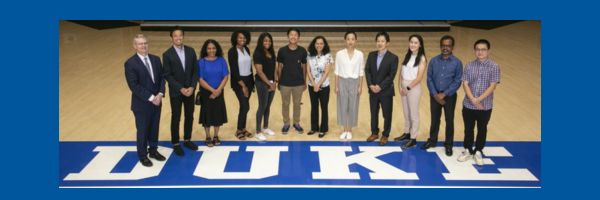
Dr. Alman is always looking to supervise enthusiastic graduate students and post-docs.
Individuals interested in any of his ongoing projects or who desire to build off of his expertise to explore related research areas are encouraged to contact him.
News and Events
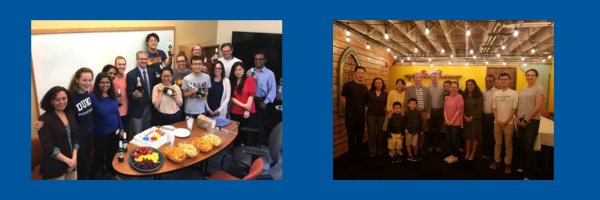
Celebrations
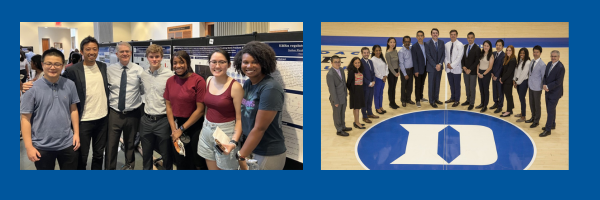
Friends, Mentors, and Peers Supporting Each Other
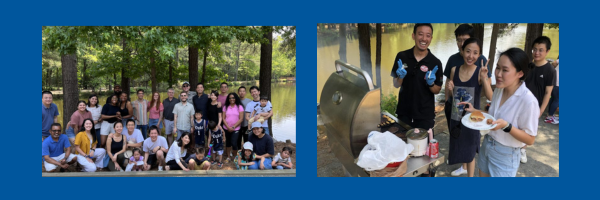
Alman Lab Welcome BBQ
